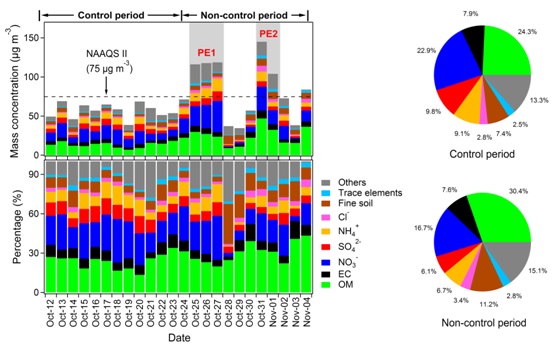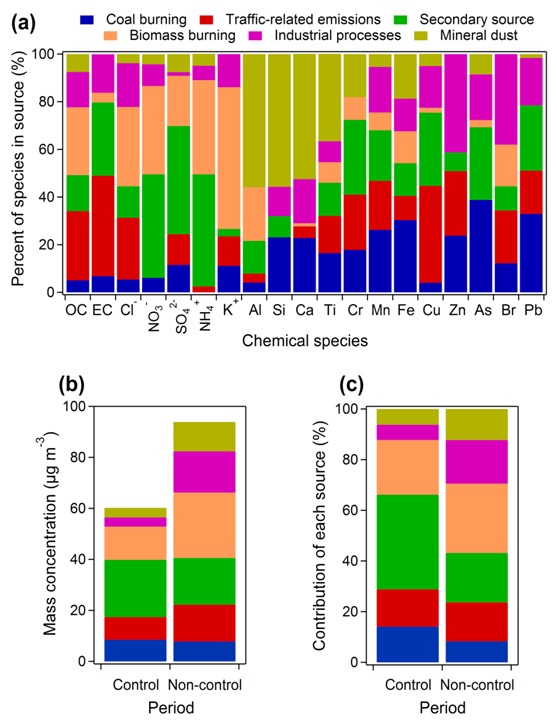PM2.5 is an important factor causing air pollution in Beijing-Tianjin-Hebei (BTH) region. In recent years, the Chinese government has taken temporary control measures, which provides valuable opportunities for evaluating the effectiveness of emission controls on air pollution.
Researchers from Institute of Earth Environment (IEE) of the Chinese Academy of Sciences together with their collaborators conducted intensive measurements from October 12 to November 4, 2017 at the Xianghe Atmospheric Integrated observatory. Their findings were published in Atmospheric Chemistry and Physics.
Mass concentrations of PM2.5 and its major chemical components were 20.6–43.1% lower during the control period compared with a non-control period, and differences were greater on days with stable meteorological conditions.
PM2.5 from traffic-related emissions, biomass burning, industrial processes, and mineral dust was 38.5–77.8% lower during the control periods versus non-control period. During one pollution episode in the non-control period, secondary inorganic aerosol dominated, and the WRF-Chem model showed that the BTH region contributed 73.6% of PM2.5 mass. A second pollution episode was linked to biomass burning, and BTH contributed 46.9% of PM2.5 mass.
Calculations based on IMPROVE algorithms showed that organic matter was the largest contributor to light extinction during the non-control period whereas NH4NO3 was the main contributor during the control period. The Tropospheric Ultraviolet and Visible radiation model showed that the average direct radiative forcing (DRF) values at the Earth’s surface were -14.0 and -19.3 W/m2 during the control and non-control periods, respectively, and the DRF for the individual PM2.5 components were 22.7–46.7% lower during the control period.
The information and dataset from our study will be useful for developing air pollution control strategies in the BTH region and for understanding associated aerosol radiative effects.

Fig.1 (a) Daily variations in the contributions of chemical species to PM2.5 mass during the campaign and (b) average contributions of chemical species during the NCCPC-control and non-control periods. PE1 and PE2 represent two pollution episodes. (Image by WANG QY et al)

Fig.2 (a) Source profiles for the six sources identified using the positive matrix factorization model version 5.0, (b) the mass concentrations of PM2.5 contributed by each source, and (c) the average source contribution of each source to the PM2.5 mass. (Image by WANG QY et al)
Contact: Bai Jie, Institute of Earth Environment, Chinese Academy of Sciences, Xi'an, China. Email: baijie@ieecas.cn
 © 2015 Institute of Earth Environment,CAS
© 2015 Institute of Earth Environment,CAS Address:No. 97 Yanxiang Road, Xi'an 710061, Shaanxi, China

 Location :
Location :